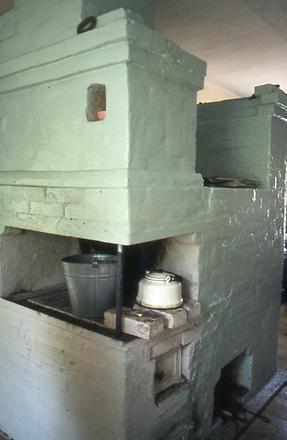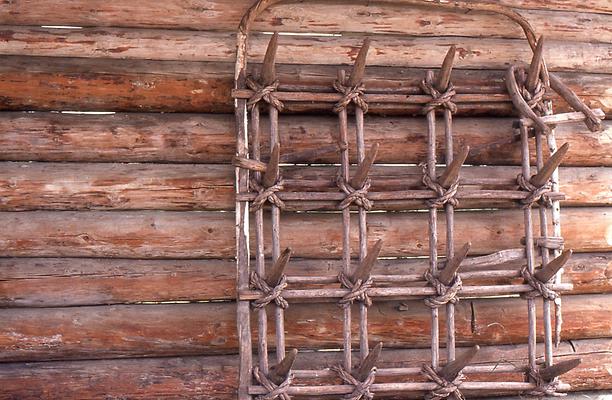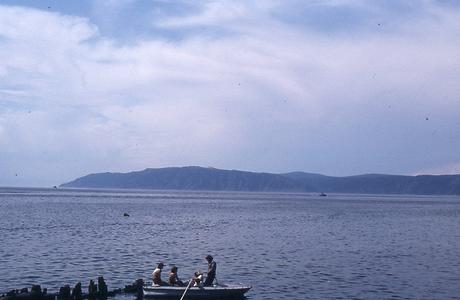Listwjanka, a Siberian village on Lake Baikal#
...and a glimpse at local architecture in this world of peasants#
By Günther JontesAll pictures were taken by the author in summer of 1982. They are part of his archive "Picture flood Jontes".
Siberia with an area of 13.1 million km2 contributes to the fact that Russia is the largest country in the world. The distance from Ural to Alaska which once belonged to Russia is 8000 km. During the Tsarist Empire this territory was conquered by daring Cossacks in the 17th century. It was gradually colonized by ethnic Russians and numerous indigenous peoples were marginalized. In the 18th century there were already more Russians than indigenous inhabitants.
During the time of the Cossack Hetmans, the huge country was highly coveted, especially due to its wealth of fur animals. Therefore, the coat of arms of the town of colonists Irkutsk shows a fabulous beast, half tiger half beaver, holding a sable in the catch. The popular ermine robes of European rulers came mostly from there. Later on, gold and diamonds were the main focus. As of the 19th century and 20th century mineral resources, raw materials and wood were exploited as relevant to modern industry. Even today huge areas are waiting to be explored. Mainly slave labour of the communist GULAG and war prisoners of the Second World War had to work there since the takeover of power by communism 100 years ago.
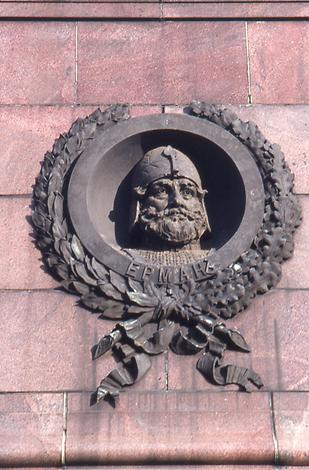

Siberia is located sufficiently distant from the centres of power Moscow and St.Petersburg/ Leningrad. A penalty for opponents of the relevant systems was to banish convicts to Siberia. One of the main towns is Irkutsk, located in the immediate vicinity of Lake Baikal, with the river Angara the only one flowing out of lake Baikal. With its 1642 m the Baikal is not only the deepest lake in the world, it represents with 23,615 km² also the largest freshwater reservoir on earth.
During the campaign of the eastbound conquest and the development of the east, a Cossack fort was founded in 1661 which received the town charter in 1686.
Since mainly intellectual dissidents were banished to Irkutsk it became an intellectual centre of the far east of the empire. The construction of the Trans-Siberian railway from Moscow to Vladivostok allowed the transport of people and mineral resources over longest distances. In 1898, the train reached Irkutsk, some 5.000 km but less than 6 hours flight away from Moscow. Today Irkutsk is the centre of an administrative district (in Russian oblast) and has about 600,000 inhabitants.
The taiga forms a significant part of the landscape and ecotype of Siberia. This Russian word is probably taken from an Ural-Altai language and is translated as "dense, impenetrable, often swampy forest". It is the vegetation zone of the boreal coniferous forests consisting of spruces, firs, larches and pines. In the taiga there are also islands of birches and aspen. It is the most northern type of forest on earth.
The "Traveling Painters" (in Russian Peredwizhniki) was a group of artists of the second half of the 19th century who was interested in the Russian landscape, its people and its history. The artists were united in an association that organized joint exhibitions. It was founded by a handful of painters in 1870. Among them was Russia's most famous painter of this time, Ilia Repin. The two paintings show impressive forest landscapes from the endless Siberian taiga and their incomparable atmosphere with birches and powerful trees.




In the vicinity of Irkutsk there are still some settlements which have preserved partly a bit of authentic character. One of the most picturesque is Listvanka with about 2000 inhabitants which is about 70 km southeast of the capital of the district. The name refers to the Russian name for the larch (Russian listwennitza). Angara, the only outflow of Lake Baikal, is located there. The government made Listvyanka with its preserved, but still alive, wooden architecture a tourist destination.



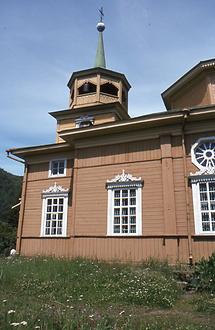


The visitor of Siberia is delighted by one special type of house. It is the "dwelling house" which is called in Russian Izba. Numerous examples have been preserved in Listwjanka. There are dwellings in block construction with facades which are divided by windows with their decorated window shutters. The building plot is separated from the street by a wooden fence which contributes in colour. Simple decorative elements add to the dignity of this type of construction.


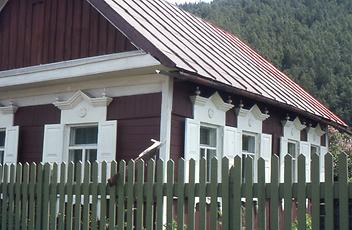






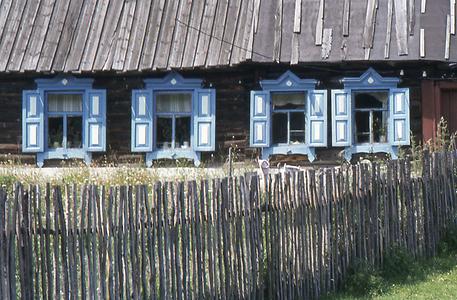






Irkutsk wurde 1979 durch eine Brandkatastrophe zu drei Vierteln eingeäschert. Dabei gingen an die 4000 Häuser verloren. Einige wenige schöne Izbas haben sich aber auch hier erhalten.
In 1979, three quarters of Irkutsk were burnt to ashes. The fire disaster destroyed 4000 houses. Just a few beautiful houses remained untouched.
The culture of Siberia was based on agriculture and hunting of fur animals. Then it became of great importance to the trading of mainly silk and tea with China. The peasantry created an own building culture which had European roots from the colonists, but was forced to adapt to the enormous climatic challenges of the coldest regions of the world. Wood was available in indescribable abundance, but metals such as the inevitable iron were rare. Iron was reserved for ploughshares, axles and other important equipment and tools. Farm buildings were constructed with broad axes and without a single iron nail.
The Siberians are aware of the uniqueness of the wood-based folk architecture. Easily accessible about 30 km from Listvyanka, there is the exemplary open-air museum Talzy.
The museum situated in the Taiga consists not only of buildings which can be visited. There are rows of village and assembly groups, where roof shapes and associated building techniques can be studied.
The roofs covered with planks have to withstand the load of large amounts of snow. The structure of tree trunks of long timber is calculated in such a way that in the case of irregularities the joints can be filled with moss and thus sealed. This creates well-insulated interior spaces.







Eine Besonderheit sind die Bauernhäuser, die über zwei durch den Wohn- und Stallbereich getrennte Höfe besitzen. Der „trockene“ Hof ist mit glatten Dielen ausgelegt und darf nur ohne Schuhwerk betreten werden. Denn hier geschehen alle Manipulationen mit dem Getreide vom Dreschen oder Ausschlagen der Garben bis zum Worfeln.
A peculiarity are those the farmhouses that have two different courtyards separated by the living area and the stable. The “dry” yard is covered with smooth planks. It is not allowed to enter it with shoes. This yard is used to process grain, from threshing or knocking out the sheaves to winnowing.

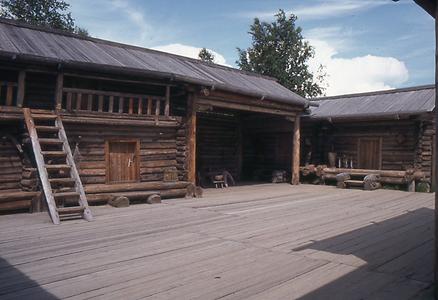




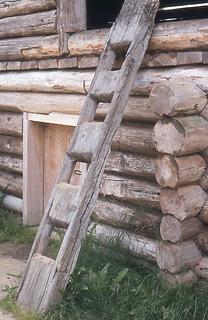
Inside, the stove (in Russian petsch, petschka) dominates. It occupies up to a quarter of the floor space of the ground floor. It is also used as a heat accumulator and one can sleep on it during the cold season, i.e. almost all year.
